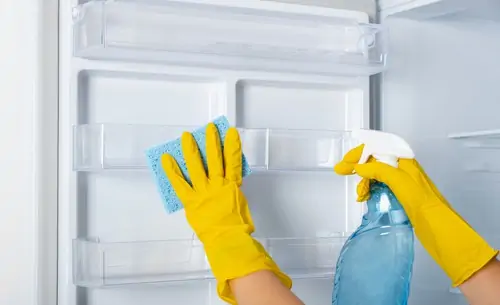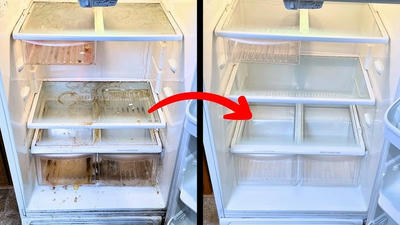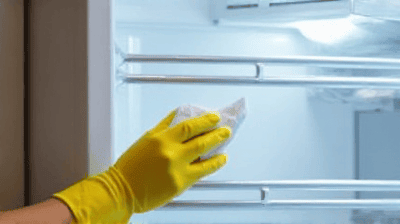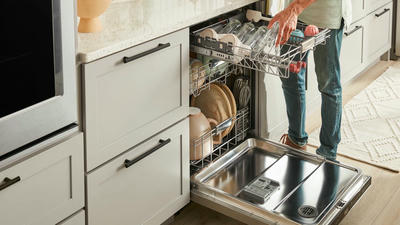How to Deep Clean Your Refrigerator for Peak Performance

A clean refrigerator is crucial for maintaining food safety, peak performance, and energy efficiency. Over time, refrigerators can accumulate spills, odors, and grime that can not only affect the taste and quality of your food but also lead to mechanical issues. Deep cleaning your refrigerator may seem like a daunting task, but with the right approach and tools, it can be a manageable endeavor.
Understanding the Importance of a Clean Refrigerator
Why Deep Clean Your Refrigerator?
Food Safety: Bacteria can thrive in spills and spoiled food, leading to foodborne illnesses. Regular cleaning helps eliminate harmful pathogens.
Odor Control: Leftover food items can generate unpleasant odors over time. A clean refrigerator eliminates these smells and keeps your food tasting fresh.
Energy Efficiency: A clean refrigerator operates more efficiently. Dust and grime can block airflow and cause your fridge to work harder, increasing energy consumption.
Longevity of the Appliance: Regular maintenance and cleaning can extend the life of your refrigerator, preventing costly repairs or replacements.
Improved Organization: Deep cleaning offers an opportunity to declutter and organize your refrigerator, making it easier to find what you need.
Preparing for the Deep Clean

Before diving into the deep cleaning process, it is important to prepare adequately. This will ensure that the task is efficient and effective.
Gathering Your Supplies
Start by gathering all necessary cleaning supplies. Here is a list of items you will need:
Cleaning Solutions: You can use a commercial refrigerator cleaner, or make your own with ingredients like vinegar, baking soda, and warm soapy water.
Sponges and Cloths: Use non-abrasive sponges, microfiber cloths, and paper towels for cleaning.
A Soft Brush: This can be useful for scrubbing tight areas like shelves and crevices.
Trash Bags: For disposing of expired or spoiled items.
Cooler or Ice Chest: To temporarily store perishable items while you clean.
Baking Soda: This is great for neutralizing odors and can also be used as a gentle abrasive.
Gloves: For personal protection while handling cleaning products.
Tools for Deeper Cleaning
In addition to standard cleaning supplies, consider having the following tools on hand:
Vacuum Cleaner: Ideal for removing dust from the coils located at the back or underneath the appliance.
Toothbrush or Small Brush: Useful for scrubbing hard-to-reach spots.
Squeegee or Small Handheld Broom: To sweep away crumbs and debris from shelves and drawer areas.
Step-by-Step Guide to Deep Cleaning Your Refrigerator
Now that you are prepared, let’s delve into the step-by-step process of deep cleaning your refrigerator.
Step 1: Empty the Refrigerator
Remove All Food Items: Start by taking all food items out of the fridge. Check expiration dates and discard any expired or spoiled food.
Organize Items: As you remove items, place them in a cooler to keep them cold while you clean. Group similar items together for easy reorganization.
Turn Off the Refrigerator: It’s a good idea to turn off your refrigerator while you clean. This will also save energy while you keep it empty.
Step 2: Remove Shelves and Drawers
Take Out Removable Parts: Carefully remove shelves, drawers, and any other removable parts from the refrigerator.
Soak and Clean: Soak these items in warm, soapy water or a mixture of vinegar and water to loosen any grime. If your shelves are glass, be cautious with temperature changes to avoid cracking.
Step 3: Clean the Interior
Wipe Down Surfaces: Use a cleaning solution (store-bought or homemade) to wipe down the interior surfaces of the refrigerator. Start from the top and work your way down to avoid pushing dirt onto clean surfaces.
Focus on Corners and Crevices: Use a soft brush or toothbrush to clean corners and crevices. These areas often gather dust and spills.
Thoroughly Clean Door Seals: Pay special attention to door seals and gaskets. Use warm, soapy water and a cloth to clean these areas, ensuring a proper seal for energy efficiency.
Step 4: Clean Removable Parts
Scrub Shelves and Drawers: After soaking, scrub the shelves and drawers with a non-abrasive sponge to remove any stubborn stains.
Rinse and Dry: Rinse thoroughly with clean water and dry completely with a clean cloth to avoid water spots.
Reorganize the Parts: Once dry, place the shelves and drawers back inside the refrigerator.
Step 5: Vacuum the Coils
Locate the Coils: Depending on your refrigerator model, the coils may be on the back or underneath the appliance.
Use a Vacuum: Carefully vacuum the coils to remove dust and debris. This helps the refrigerator run more efficiently.
Step 6: Clean the Exterior
Wipe Down the Outside: Clean the exterior surfaces of the refrigerator with a suitable cleaner. For stainless steel models, use a stainless steel cleaner or a vinegar-water solution.
Clean the Handles: Don’t forget to clean the handles, as they accumulate grease and fingerprints.
Step 7: Restock the Refrigerator
Check Food Items: Before restocking, check all items for any signs of spoilage or expiration.
Organize as You Restock: Place food items back into the refrigerator in an organized manner. Consider grouping similar items together for easy access.
Use Storage Containers: Utilize clear containers to store food items and prevent clutter. Label containers for easy identification.
Step 8: Final Touch
Sprinkle Baking Soda: To help maintain freshness, sprinkle an open box of baking soda on a shelf. This helps absorb odors.
Restart the Refrigerator: Turn the refrigerator back on and allow it to reach the desired temperature before placing perishables back inside.
Routine Maintenance Tips for Your Refrigerator

Keeping your refrigerator clean doesn’t end with a deep clean. To maintain its performance, consider these routine maintenance tips:
Regular Cleaning Schedule
Monthly Maintenance: Aim to wipe down surfaces and check for expired or spoiled items monthly.
Quarterly Deep Cleans: Perform deep cleaning procedures every three to six months, depending on usage.
Monitor Temperature Settings
Ideal Temperature: Keep the refrigerator temperature at or below 40°F (4°C) and the freezer at 0°F (-18°C) to ensure food safety.
Use a Thermometer: Place a refrigerator thermometer inside to monitor temperature accurately.
Check Door Seals
Inspect Seals Regularly: Regularly check the door seals for wear and tear. Dirty or damaged seals can cause energy loss.
Clean Seals: Use warm, soapy water to clean seals, ensuring they remain intact for proper sealing.
Organizing Food Items
FIFO Method: Use the “first in, first out” principle when stocking food items to ensure older items are used before purchasing new.
Store Food Properly: Use airtight containers for leftovers and ensure items are labeled with dates.
Troubleshooting Common Refrigerator Issues
Even with proper cleaning and maintenance, refrigerators can encounter issues. Here are some common problems and troubleshooting tips:
1. Foul Odors
Causes: Odors can arise from spoiled food, spills, or mold.
Solutions:
- Deep clean and check for hidden spills.
- Use baking soda or activated charcoal to absorb odors.
2. Excessive Frost Build-Up
Causes: Frost build-up can indicate a faulty door seal or high humidity.
Solutions:
- Check and clean the door seals to ensure a proper fit.
- Defrost the freezer if there is significant ice build-up.
3. Freezer Not Cold Enough
Causes: This could be due to a malfunctioning thermostat or blocked vents.
Solutions:
- Adjust the thermostat and give it time to stabilize.
- Check for obstructions in air vents.
4. Water Leakage
Causes: Leaking water can be attributed to a clogged defrost drain or damaged water line.
Solutions:
- Inspect and clear any clogs in the defrost drainage system.
- Check water connections for leaks.
Tips for Energy Efficiency

Maintaining an energy-efficient refrigerator helps reduce energy bills and environmental impact. Here are some tips:
Keep the Refrigerator Full: A full refrigerator retains cold better than an empty one.
Avoid Overloading: While keeping it full is important, do not overload it as this can restrict airflow.
Maintain Proper Airflow: Ensure items are not blocking vents inside the refrigerator.
Regularly Check Temperature Settings: Ensure your refrigerator is operating within the ideal temperature range.
Keep the Exterior Clean: A clean exterior, especially the coils, helps the refrigerator run efficiently.
Conclusion
Deep cleaning your refrigerator for peak performance is an essential task that not only enhances food safety but also prolongs the life of your appliance. By following the steps outlined in this guide and adopting routine maintenance practices, you can ensure your refrigerator remains in top condition.
A clean and organized refrigerator allows you to enjoy your food at its best while saving time and reducing food waste. Embrace these cleaning efforts, and you’ll reap the benefits of a fresher, more efficient kitchen appliance.


